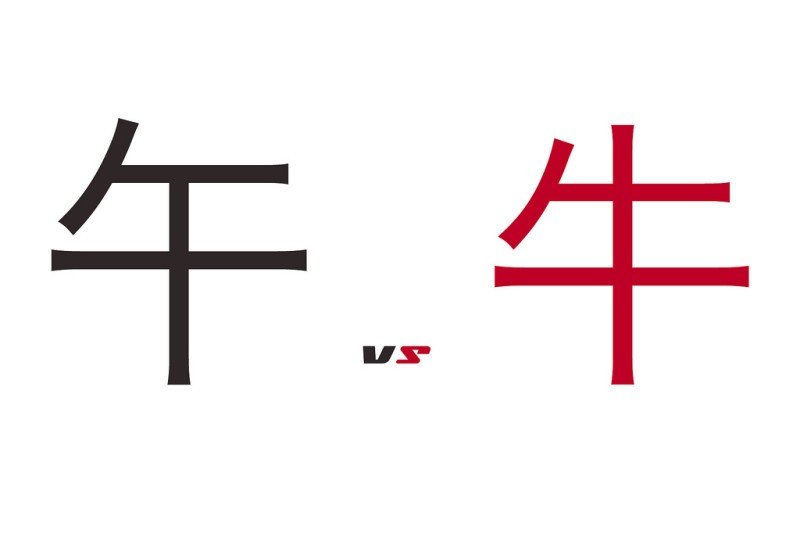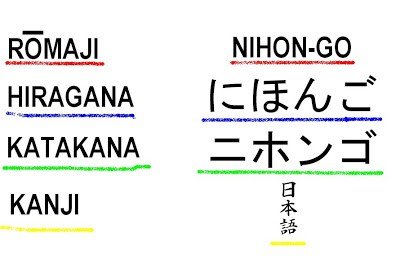In this article, we are going to talk about the biggest difficulties of learning the Japanese language. Knowing this can help us face this difficulty, so don't try to look at difficulties and think about giving up. Learning Japanese can be quite a challenge, but it's really fun and satisfying.
By clicking on the title of some of the difficulties, you will be redirected to a special article on the subject.
Table of Content
1 - Another language
Those who think that learning a new language is simply learning how to say a certain English word in Japanese is completely wrong. The Japanese language has a totally different vocabulary. There are words that only exist in Japanese and words that exist only in English. Some Japanese expressions may not make sense to those who are studying the language, on some occasions you will really have difficulty understanding some expressions.

2 - Kanji
I think that everyone who thinks about learning the Japanese language, knows the Chinese ideograms present in the language, it is one of the biggest difficulties.
You have to learn at least 1,000 kanji to be able to achieve some fluency, or 2,000 to be able to read anything in the language, but the total kanji exceeds 4,000.
Besides the enormous number of ideograms and strokes, a Kanji usually has several pronunciations. Besides that, there are still many kanji that look similar to each other, making studies even more difficult.

3 - Small words
Japanese has only 106 syllables, so many words are usually just 1 syllable, which can confuse inexperienced students.
Words like 目 (me, eyes), 手 (te, hand), 愛 (ouch, love) 名 (na, name) can get mixed up with other syllables and you might think you're hearing another word.
4 - Same words
Japanese has many words with the same pronunciation but different meanings. This can drive you a little crazy if you haven't paid attention to the context.
Words like "Kami" can mean God, Hair or Paper. There are pronunciations that can mean up to 50 different words.

5 - Conversation speed
Besides the words being similar, Japanese people speak very fast. For you to understand and speak 日本語 at the standard speed is a big challenge.
Trying to read a Japanese text and a Portuguese text, you will take a long time in Japanese, because you can't read at the correct speed.
Japanese indeed has more words than Portuguese in a sentence; sometimes you'll hear thousands of anata and watashi in a text.
6 - Grammar
As simple as Japanese grammar is compared to Portuguese, it is still difficult. You will have to record the particles and know when to use it.
Come across thousands of peculiarities. Really Japanese grammar is very simple, but different from Portuguese, this can cause a good difficulty at first.
Word orders, sentence completion, the fact that there are no genders, plural and future tense, all of this can make it difficult to understand the language.

7 - Keigo - Formality
Japanese is a polite and refined language. In addition to the standard spoken language, there are polite and respectful forms to speak with certain types of people, known as Keigo.
It is used to formally converse with people of different levels. It uses entirely different vocabulary, structures and grammatical expressions. It's like an intellectual Brazilian who speaks complicated words that we don't understand.
8 - Dialects
Even if you learn the standard Japanese language, dialects can become a nuisance in certain regions of Japan. The country is divided into 47 states, each with its own dialect or distinct accent. The problem is that these dialects can change many words and grammar of the language, making it difficult to understand a conversation.
9 - Numeric counts
Another challenge that can be tackled is when it comes to learning numbers. It's easy to learn to count from 1 to 1,000. however the Japanese use a way of counting for each object or thing.
They use a suffix after the number to indicate that they are counting something, in addition to changing the pronunciation of some numbers. Examples: 五匹の猫 (gohiki no neko - 5 cats) 二人 (futari - 2 people).

10 - Words with the same meaning
Japanese has many words with the same meaning, which may or may not be used in certain situations. For example, there are several ways to say “I” and other pronouns.
There is an Americanized version of some words, such as milk: ミルク (Miruku) or 牛乳 (Gyūnyū) and several other words that can have the same meaning and different pronunciations, especially kanji words, some usually have their reading abbreviated in just one syllable.
Wrapping Up
No matter the difficulties ahead, aprender japonês is something very satisfying and fun, when done the right way. If you have difficulties while studying, our site is committed to helping you with articles about the idioma japanese and about Japan. It's up to you to put it into practice, dedicate yourself to a study method, and never give up!
